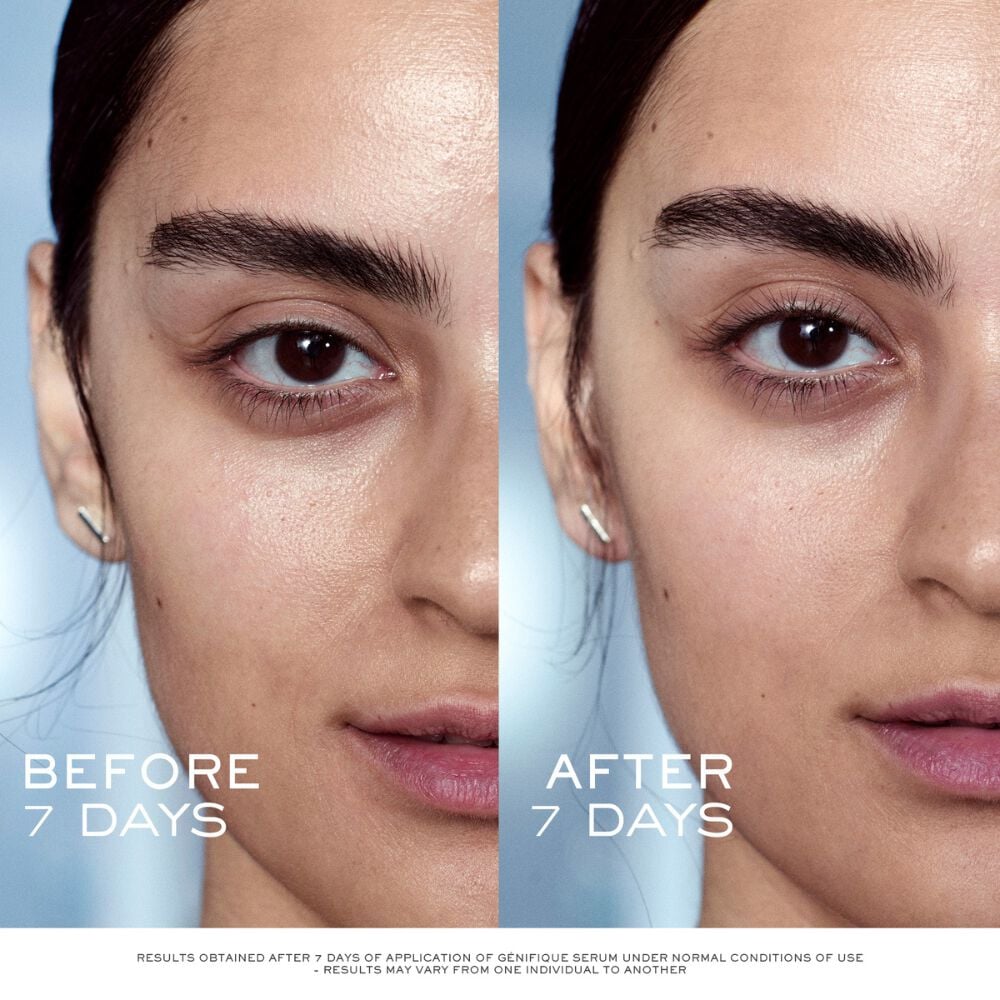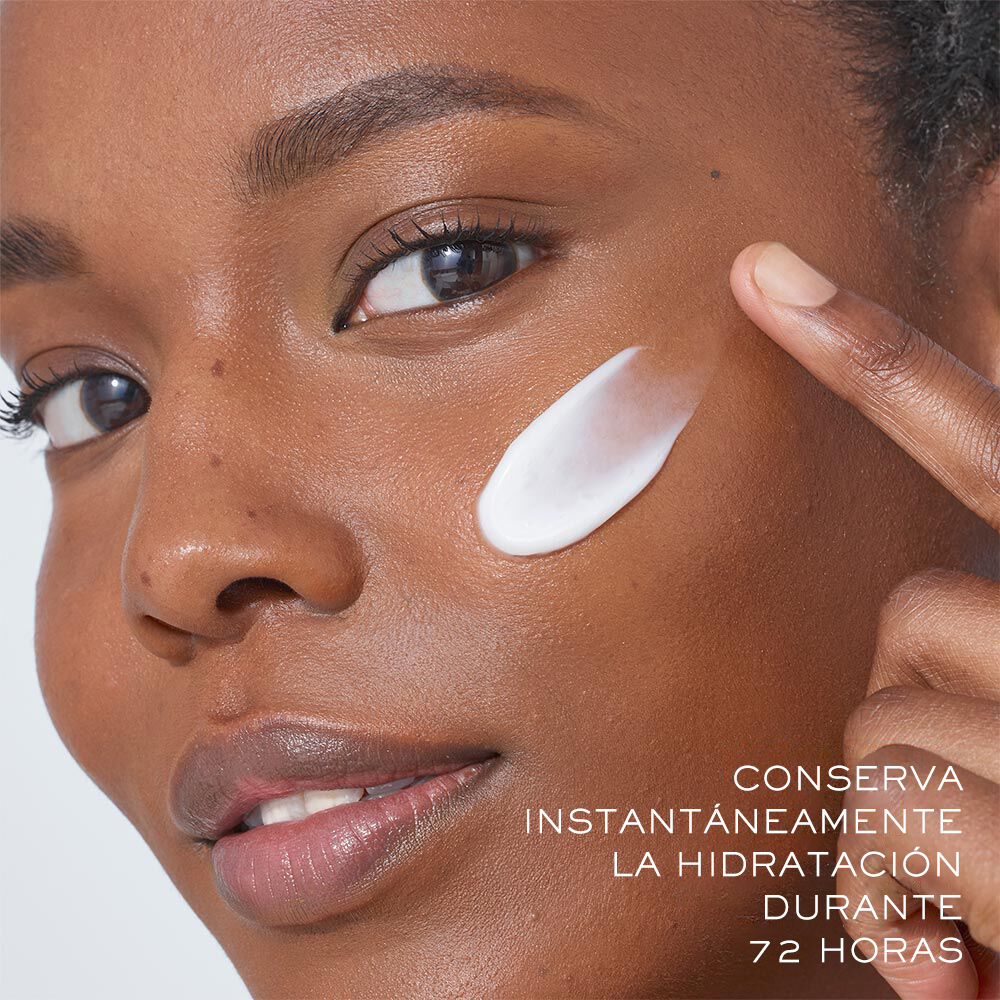Si bien la piel seca es un factor común para una variedad de posibles problemas de la piel, como textura áspera, piel opaca, piel crepada o todo lo anterior, podría haber otro culpable: piel deshidratada. Y no, la piel deshidratada y la piel seca no se pueden usar indistintamente, aunque sucede comúnmente, porque realmente son dos cosas separadas. Desglosémoslo.
¿Qué es la piel seca?
La piel seca describe la piel que carece de grasa.1 También es un tipo de piel, y la genética es un factor importante; por lo tanto, al igual que la piel naturalmente grasosa, podría haber nacido con piel seca. Y debido a que la piel no produce suficiente grasa, un componente importante de una barrera de humectación de la piel saludable, que puede afectar su función y provocar piel tensa, áspera o con picazón. La edad también puede contribuir a la sequedad de la piel, así como a factores externos que causan la sequedad de la piel, como el clima adverso, la exposición a los rayos UV y los cambios extremos en la temperatura.
¿Qué es la piel deshidratada?
Por otro lado, la piel deshidratada carece de agua. También es una afección, lo que significa que puede suceder independientemente de su tipo de piel. En última instancia, ocurre si su piel pierde agua más rápido de lo que recibe agua.2 El punto más importante de la diferencia aquí es que la piel deshidratada no es una medida de la grasa de la piel, lo que significa que es totalmente posible tener una piel grasosa y deshidratada, o incluso acné con piel deshidratada.
La piel deshidratada puede ser causada por la falta de hidratación adecuada, así como por cualquier cosa que comprometa la barrera cutánea, ya que la barrera cutánea es integral para prevenir la pérdida de agua transepidérmica, un proceso a través del cual el agua de la piel se evapora en el aire.3 Eso incluye el lavado excesivo de la piel, que puede quitarle humedad a la piel y no humectarla bien o con la frecuencia suficiente. Esto puede parecer contradictorio si tiene piel grasa y deshidratada, pero eliminar demasiada grasa puede hacer que su piel produzca demasiado aceite.
¿Cómo sé si mi piel está deshidratada o seca?
¿No sabe si tiene la piel seca o deshidratada? No está solo. La piel seca tiende a tener escamas o picazón y puede estar acompañada de afecciones inflamatorias como eccema y dermatitis atópica. Con la piel deshidratada, por otro lado, la piel puede sentirse tensa, parecer opaca o tener un aspecto más arrugado. Intente realizar una prueba de pellizco, también conocida como prueba de turgencia cutánea, para detectarla.4 Cómo hacerlo:
1. Pellizque su piel con dos dedos
2. Libere la piel pellizcada
3. Juzgar cuánto tarda su piel en volver a la normalidad
¿Cómo es la piel deshidratada? Bueno, si tu piel se resquebrajaba bastante rápido, probablemente no esté deshidratada. Pero si la piel tarda más en regresar al estado en que estaba antes de realizar la prueba de pellizco, piense que más de un instante, la piel deshidratada puede ser la causa, ya que la baja turgencia de la piel, una medida de elasticidad, es un signo de deshidratación.
Cómo reparar la piel seca y la piel deshidratada
Si tu piel está deshidratada, beber agua y aumentar tu hidratación general es un buen primer paso.5 También se sugiere introducir humectantes, ya que ayudan a atraer agua a la superficie de la piel y a retenerla. Dos humectantes bien conocidos son el ácido hialurónico y la glicerina. Están bien combinados con ingredientes oclusivos, como aceites, para evitar que el agua se evapore de la superficie de la piel.6
No es sorprendente que una barrera de piel hidratada sea clave aquí. La piel seca puede afectar la barrera cutánea y una barrera cutánea deteriorada puede provocar pérdida de agua transepidérmica y, por lo tanto, deshidratación. (Si se pregunta: Sí, es posible tener la piel seca y deshidratada). Por lo tanto, si nota signos de cualquiera de los dos, es útil hidratar la barrera de la piel. Primero, no limpie con demasiada frecuencia ni con fórmulas duras. Luego, opte por fórmulas hidratantes que ayuden a fortalecer la barrera de la piel con humectación.
¿Cómo puedo hidratar mi piel rápidamente?
Considere el suero facial Advanced Génifique, que está formulado con ceramidas y ácido hialurónico, así como la crema nocturna Advanced Génifique, que ofrece reparación nocturna con una mezcla de ingredientes activos, incluidas ceramidas, ácido hialurónico y extracto de bífido, que ayuda a promover el equilibrio del microbioma de la piel.
Si tienes un tipo de piel seca, querrás mantener una buena rutina de cuidado de la piel a largo plazo, que incluya humectantes que ayuden a proporcionar específicamente lo que carece la piel seca, principalmente, lípidos que son parte integral de la barrera cutánea. Considere el uso de productos que contengan ceramidas, que se encuentran naturalmente en una barrera cutánea saludable y que sirven como “mortero” de las células de la piel, que son los “ladrillos”.
Además, humecta la piel de forma duradera con un humectante como Absolue Revitalizing & Brightening Rich Cream, que brinda hidratación durante 24 horas junto con firmeza y luminosidad. Contiene extractos de rosas grandes y aceites vegetales nutritivos, y apoya la barrera de la piel. Durante el día, pruebe Rénergie H.P.N. 300-Peptide Cream SPF 25, que contiene una mezcla única de ácido hialurónico, 300 péptidos y ceras botánicas. No solo proporciona humedad, sino que también ofrece protección solar.
Comprar la selección
1 https://my.clevelandclinic.org/health/diseases/16940-dry-skinitchy-skin
2 https://www.mayoclinic.org/healthy-lifestyle/adult-health/expert-answers/hydrated-skin/faq-20058067
3 https://www.sciencedirect.com/topics/veterinary-science-and-veterinary-medicine/transepidermal-water-loss
4 https://medlineplus.gov/ency/article/003281.htm
5 https://www.ncbi.nlm.nih.gov/pmc/articles/PMC4529263/
6 https://www.ncbi.nlm.nih.gov/pmc/articles/PMC4885180/


















